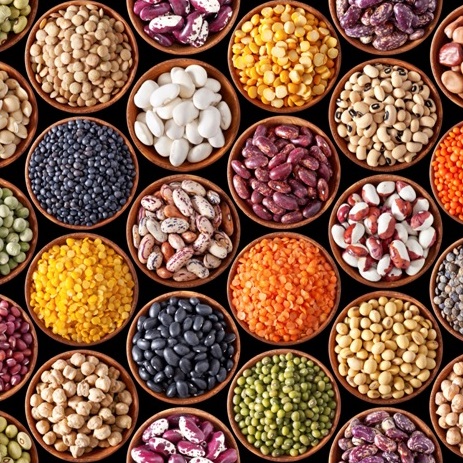Grain legumes belong to the Fabaceae family and their distinguishing feature is their pods which contain the main consumed portion of the plant, the seeds. In fact, they are mainly consumed as dried seeds, but they can also be eaten as immature seeds, the whole pod or even the plant leaves.
The main consumed species by Men are soy (Glycine max), common bean (Phaseolus vulgaris), peas (Pisum sativum), chickpea (Cicer arietinum), lentils (Lens culinaris), broad beans (Vicia faba), lupins (Lupinus), cowpea (Vigna unguiculata) and peanut (Arachis hypogaea).
- They have a high protein content (roughly twice as much as cereals);
- That high protein content is the cause for the increasing demand for legumes; in richer areas due to awareness of the beneficial substitution of animal protein for plant protein and in poorer areas they are an inexpensive alternative to meat;
- Other valuable nutrients they contain, include;
- healthy fats with no cholesterol, reducing the risk of cardiovascular diseases;
- iron, preventing anaemia;
- potassium, important for muscular function;
- fiber, that keeps the digestive track regulated;
- folate (B-vitamin), necessary for the correct development of the nervous system;
- low glycemic index, contributing for a stable blood sugar level, especially important for people with diabetes;
- no gluten, suitable for coeliacs.
- Another unique feature of legumes is their ability to establish symbiotic relationships with soil rhizobium that allows nitrogen fixation from the air to be transferred to the soil. Hence, grain legumes are key players in the nitrogen cycle, contributing for soil quality maintenance; minimizing the need to use N fertilizers;
- Legumes contain interesting non-nutrient compounds; some of these may be considered anti-nutrients because they potentially decrease digestibility of the grain but simultaneously, some of them are bio-active compounds with proven health benefits.
- - Finally, as dried seeds, they are easily stored and transported without refrigeration, which facilitates their distribution.




